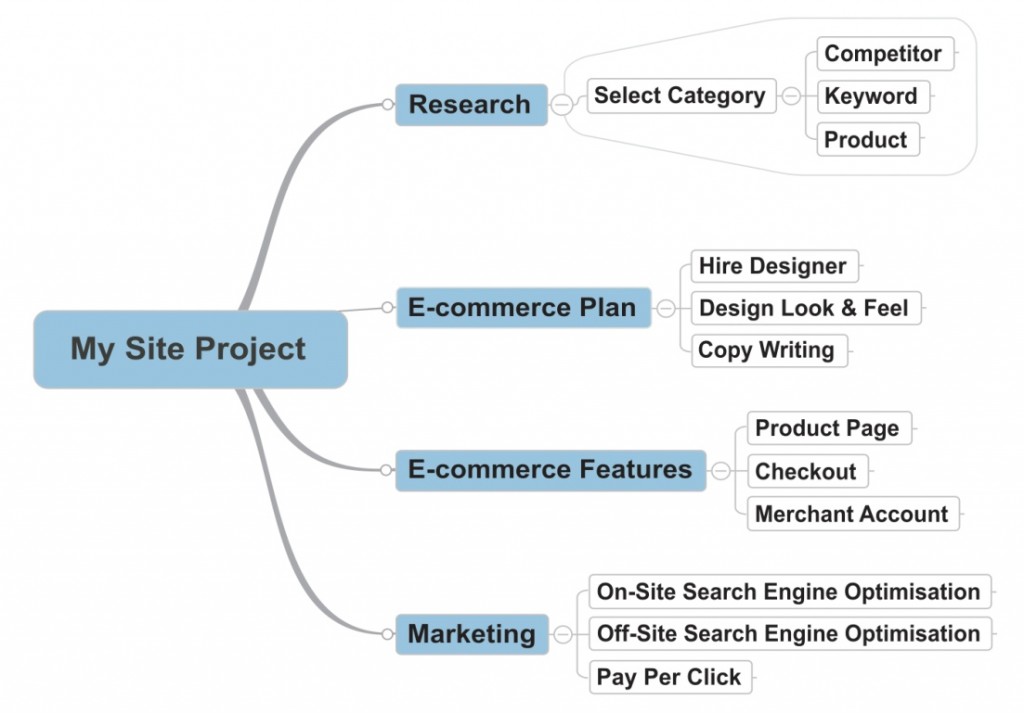
Plan for Profit.
This is critical for a successful ecommerce business. The numbers or financials are your compass and give you the true picture of where you are before you start and as you progress. They detail your growth or your decline and failings. Numbers do not lie, period!
Analysis.
This is a time to be realistic and look at your business idea with honesty. Many small business owners try to do everything themselves and 12 months down the line, they realize they are running out of steam—and cash. So ask yourself:
- Will your idea work and can it work based on the following points?
- Do you have the resources and money to make it work?
- In addition, do you have the work force to make it happen and will it be profitable?
Plan.
Your plan will include a small written document covering key areas of your website and business and will keep you focused and on track. You have heard the old adage ‘If you Fail to Plan, you Plan to Fail’. How true – unless you hit the lottery and by pure chance you get it right first time without planning. There is a better way. Stephen Pierce says to be successful you need to be:
‘FOCUSED. CONSISTENT. PATIENT’
Planning Software.
You can plan on paper, in Microsoft Word or Visio, or using Mind Mapping software such as MindManager. Your plan does not have to be 100 pages long. Remember KISS? So Keep it Simple. Just cover the main areas and use bullets in your Word document or branches in your Mind Mapping software. The most important software for your plan is a spreadsheet, using Microsoft Excel, Google Docs or OpenOffice to handle the numbers and financial forecasting.
Forecast & Planning Software:
- Microsoft Office: Excel, Word, Visio, etc: Microsoft.com
- Google Docs: Google Drive (Now Incorporates Docs)
- OpenOffice: OpenOffice
- MindManager: MindJet.com
- EverNote: EverNote.com
Flexibility.
You and your plan have to be flexible—from the day your website launches—as it is work in progress that acts as a template changing over time. You will not get everything right the first time you implement it and your template will develop as you grow. Decide on a few contingencies for each option and be flexible not rigid, so if you have to move the goal posts you can.
Time vs. Money.
When you start an ecommerce website and business, there are two possible investment paths or essentially two strategic options to choose from:
- Option 1 – Time: Will you start up passively, allocating only a small percentage of the required budget to compete in your product category? Consequently investing monthly for up to 3 years, before you see a profit?
- Option 2 – Money: Will you budget correctly and honestly, and allocate and invest the required amount from day one, giving you the ability to be aggressive and attack your market head on, taking market share from day one?
From my experience and after speaking with clients and other online retailers, I can tell you that the majority of ecommerce businesses choose option 1. I personally believe this is because of: (a) Not planning, forecasting and budgeting; (b) Not being honest with themselves; (c) Fear of failure or success.
You have heard the old adage that essentially says ‘You can always make more money, but you only have a limited amount of time’. This is really what we are discussing here… are you going to join the 97% and invest 3-5 years of struggle, perhaps ultimately quitting with big debts, or do you want immediate profits and success?
Hot Tip: Do not be afraid to allocate and invest good money where required, especially in your Start Up ecommerce website and marketing—It is far easier to start with a BANG and compete aggressively from day one, as opposed to tiptoeing into your market.
If You Start Up Passively and Excessively Conservatively, Problems Immediately Become Apparent:
- Your website is not good enough to compete in your chosen product category.
- You have little or no traffic due to poor on-site and off-site SEO and poor marketing.
- Your site visitors do not stick… (your visitor-to-sales ratio is shockingly poor) = No Sales!
- Continuous website development and investment is required. Added up over 2 to 3 years this becomes 10 to 100 times more than a solid initial investment would have cost.
- As the months and years go by with poor sales, increasing costs and no profits, you get more disillusioned with the time wasted.
- You start to panic and invest irrationally in big numbers with little to no return.
- I think you now get the idea!
To sum up this Critical Point…
Research – Plan – Forecast – Budget – INVEST – Kick Ass!’
Budget & Costs.
Decide from the outset what you have to spend, what you can afford to spend and where you should allocate and spend this money. Create a simple spreadsheet using Excel or Google Docs. In the spreadsheet detail what you have to spend as start up costs, and as you progress over the next 12 months to 3 years. I would focus more on the first 12 months with flexibility. Now detail your business and ongoing costs. Costs are any expense to your business and website, and will include your site build, site maintenance, general business and marketing costs, and outsourcing or employees.
You can Split Your Costs into these Four or More Sub-Categories:
1) Product Costs may include: Buying products, shipping (delivery), and packaging
2) Website Operational Costs may include: Initial build & launch of site, ongoing costs for site updates, merchant and transaction fees
3) Business Costs may include: Office rental, computers, internet access, insurance and employees
4) Marketing Costs may include: SEO, SEM, Social Media, Offline marketing
Hot Tip: Include as much as possible of your start up site development work, features and modules in your initial website build, or you may have unnecessary costs as you grow. Brain dump what you want from the site now, and into the future. Modules and features you do not need when you launch, can simply be deactivated, until you need them on the live site.
Forecast for Profit.
When you have detailed your costs and budgets, it is time to forecast your sales. These projections are essentially an estimation based on your research and forecast sales. Be conservative and mark down how many items you predict you will sell per month and per annum, and multiply this by your sell price. Then subtract your Cost of Sale, Materials, Stock Sold, Variable Costs or Direct Costs, and you have your Gross Profit. Then subtract all business overheads (also known as running costs, fixed costs or indirect costs) at the bottom of your spreadsheet and you have your Net (bottom line) Profit. This is the important number that means success or failure!
You now have a good idea if your business and ecommerce site ideas are viable and profitable. Be very honest with yourself as most people fail as this point. Look for any leaks in your numbers and document your actual sales on your spreadsheet, against your forecasted numbers as you start to trade and progress. This will keep you on track.
Hot Tip: If you plan on holding stock yourself, as opposed to drop shipping (sending direct to your customer from supplier), these are key costs to include in your forecasts. Holding stock can be very costly when you need to pay for the product up front. Even if you have a monthly credit account with your supplier it will need paying for sooner or later—plus you have warehouse costs and insurance for the stock, etc.
Gross Profit %.
I feel it is important to touch on Gross Profit (GP) again as it is something that many online retailers simply have no understanding of.
Gross profit is the profit a business would make after the Cost of Sale, Materials, Stock Sold, Variable Costs or Direct Costs have all been subtracted from your total sales. To simplify: you add up all your sales and then take away all you had to spend in terms of stock or materials, shipping fees to make and deliver those products to your customers.
It is critical to determine if there is money to be made, by working out your GP before you decide on a particular product and market. With online retailing, prices tend to be cheaper than offline. I know that many online retailers try to work with tiny Gross Profit margins. When they deduct all overheads (also known as running costs, fixed costs and indirect costs) from their gross profit, they are left with a miniscule Net Profit or worse still a loss.
Yes, you read that right; many websites are trading at a loss! You’d be better off working for minimum wage than slaving 7 days a week in your own business for a loss.
Shipping & Delivery Fee Profits.
Shipping charges enable you to make profits on top of your product sale price, so factor this in. If you are charged $5.95 for shipping one item from your courier (Shipping/Logistics Company) you may wish to charge the customer $9.95 as an example. However, do your best to keep shipping fees competitive unless you sell niche and high priced items where you can make really good margins on shipping.
Seasonal Trends.
When forecasting sales you will need to take into consideration your biggest selling months and your quiet months when sales are low. Depending on the product you are selling sales will peak and trough throughout the year. No month will be the same and even within each month, you will see a pattern in sales. For example, as and when your prospects get their monthly paycheck, your sales will peak. When you have some trading history and actual data to analyze, this will be essential reading and very important information for you and for your sites’ success.
Handling Growth.
Naturally as you grow your business, sales will rise but so will your costs. This is the challenge, keeping costs low as your sales increase. If you grow fast your costs can so easily skyrocket—and often out of control—on things such as stock, PC’s and technology, employees and maybe even a move to larger premises that comes with its own associated costs. So it’s critical to keep an eye on your Sales to Costs ratio. Using good accounts software such as Quickbooks or Sage will allow you to do this, alternatively using a simple spreadsheet will more than suffice.
From the day your website starts trading you must monitor key accounting areas at least weekly – especially your sales and costs, and the resulting net profit (bottom line). Many large companies will monitor these numbers on an hourly basis giving them the opportunity to respond accordingly with product prices, site usability and marketing such is the importance of numbers in your business.
I recommend as a minimum you check your Profit & Loss monthly and your balance sheet weekly.



